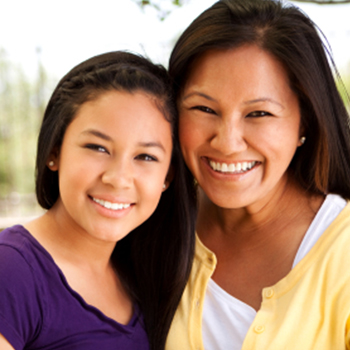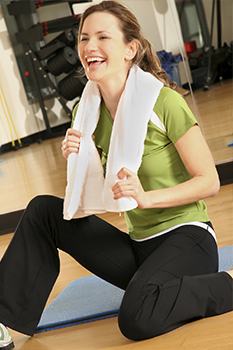
The staff of Westshore Women’s Health can help adolescent girls be more comfortable with the changes taking place with their bodies.
The first period
Perhaps the most memorable event during puberty is the first period. Many changes, such as growing taller, breast development, pubic hair and acne, occur before the first period. All girls are different. Some may start their period or menses at age 10; while some may not experience a period until age 14. Girls who are lean and athletic tend to start later.
The first period often is very heavy and painful. Ovulation, or the process of making an egg, helps make a “normal” period. Unfortunately, many girls do not ovulate in the beginning, resulting in heavy bleeding. Some girls also may have a bleeding problem that shows up when they start having periods.
It is not necessary for girls to see the gynecologist just because they started their period. However, it is good to have a visit with a gynecologist (some pediatricians also feel comfortable providing this service) between the ages of 13 and 15 to talk about puberty, periods, and immunization. Pap smears are not currently performed until age 21.
Understanding your menstrual cycle
Your ovaries start trying to make eggs in puberty. As they are developing eggs, the ovaries make hormones. These hormones make tissue inside the womb or uterus, which has the potential to support pregnancy. When pregnancy does not happen, over time the hormone levels drop and the tissue is shed, causing a period or menses. Very little blood is really lost during the menses. Most of what is seen includes tissue and water. The heavier the bleeding, the more the pain. Sometimes the blood will clump and form clots. Clots are also very painful to pass.
Menstrual cramps and pelvic pain
Because the adolescent is often not ovulating, her periods may very well not be regular for several years. However, she should see a gynecologist if she bleeds for weeks at a time, has problems with feeling lightheaded, or bleeds heavy for several hours. These early cycles are often very painful. Sometimes adolescents will become anemic or low in blood iron from problems with bleeding.
The best over-the-counter medicines for heavy bleeding and/or cramping are ibuprofen or naprosyn. It is helpful to starting taking the medication when the period begins and continues for two days. Be sure the adolescent has no stomach problems when taking the medicine.
Exercise is a natural way to help with painful period cramps. Exercise increases natural endorphins to help with pain control. The adolescent should see a gynecologist if she has pelvic pain that is not controlled by over-the-counter medicines or not associated with the period.
Sexually transmitted disease counseling
We encourage our adolescent patients to not be sexually active as they are very susceptible to sexually transmitted diseases (STDs).

Healthy diet and exercise
As so many changes are happening with an adolescent’s body, this is a great time to eat well and get exercise. Unfortunately, between all of the commitments in adolescence, if a girl does not play a sport, exercise does not happen. Also, often times sleep habits are poor, staying up late, eating late, etc. It is so important for adolescents to get at least eight hours of sleep a night. Lack of sleep can cause weight gain, poor performance in school, and other health problems. It is very important for teens to get at least 30 minutes of cardiovascular activity daily. This will help the sleep quality. Also, avoiding late night texting and computer activity is helpful.
Teens also are just learning to drive, and suddenly have access to fast foods and sweets at anytime. It is important to focus on eating whole foods, or foods that are not processed. If you cannot recognize the ingredients on the label, it is not a “whole food.” Teens tend to snack on high carbohydrate or sugar-filled foods, and it is important to include protein – such as plain nuts, beans, chicken and lean meat -- in meal. Also, the focus should be on healthful eating and exercise for a healthy body, and not solely to achieve a certain weight or shape. Teens just want to be normal, and focusing on achieving a certain weight can be dangerous.
Teens are generally not good milk drinkers. They should get about 1300 milligrams of calcium in their diet daily. Caffeine beverages actually make you lose even more calcium. A typical glass of milk contains almost 300 mg of calcium. Yogurt and orange juice with calcium added are other good sources. For more information on calcium sources, go to https://ods.od.nih.gov/factsheets/calcium/.